bodies
 When I first heard about the bizarre phenomenon found under the home of Benjamin Franklin, I thought of a few possibilities. The remains, found in 1998, consisted of 1,200 bones are believed to be from more than 15 human bodies found in the basement of Ben Franklin’s house. Six of the bodies were children. My first thought was, “Please tell me that this is some Indian burial site, or that there is some logical explanation as to why there would be bodies buried in this hero Founding Father’s home.” I have always liked Ben Franklin. I found his “antics” to be so interesting. To say the least, he was a bit strange in his experimentations, and that was enough to make me wonder (and hope it wasn’t so) if Ben Franklin could possibly have some horrid alter ego. He wouldn’t be the first scientist to go off the deep end to experiment on human bodies, but then again, there certainly are people today that have chosen to donate their bodies to science, so why couldn’t that be the case back then. I prayed that was the case.
When I first heard about the bizarre phenomenon found under the home of Benjamin Franklin, I thought of a few possibilities. The remains, found in 1998, consisted of 1,200 bones are believed to be from more than 15 human bodies found in the basement of Ben Franklin’s house. Six of the bodies were children. My first thought was, “Please tell me that this is some Indian burial site, or that there is some logical explanation as to why there would be bodies buried in this hero Founding Father’s home.” I have always liked Ben Franklin. I found his “antics” to be so interesting. To say the least, he was a bit strange in his experimentations, and that was enough to make me wonder (and hope it wasn’t so) if Ben Franklin could possibly have some horrid alter ego. He wouldn’t be the first scientist to go off the deep end to experiment on human bodies, but then again, there certainly are people today that have chosen to donate their bodies to science, so why couldn’t that be the case back then. I prayed that was the case.
At this point, many people would immediately assume that Ben Franklin was some kind of closet killer, who tortured and murdered his victims. It would be thought that the world had been so naive, that we lived in the dark for years, but before you go crafting a murder mystery about him, please be aware that it was revealed that the bodies were used in the study of human anatomy. So, it actually was bodies donated for scientific  research. I certainly didn’t know that they did that sort of thing back then, but it seems that they did.
research. I certainly didn’t know that they did that sort of thing back then, but it seems that they did.
The house, located in London, England was undergoing some conservation work in 1998, when the bones were discovered. Some of the bodies were dismembered, or had trepanned skulls, which is skulls with holes drilled through them. Ben Franklin had lived home in London for nearly twenty years leading up to the signing of the Declaration of Independence. It was more than 200 years later, when the conservation work uncovered the 15 bodies in the basement, buried in a secret, windowless room beneath the garden. While on could imagine horrible things, “The most plausible explanation is not mass murder, but an anatomy school run by Benjamin Franklin’s young friend and protege, William Hewson.” So, it would seem that Ben Franklin either loaned the home to Hewson (a surgeon), stored the bodies for Hewson, or allowed Hewson to do his scientific experiments in the room in the Franklin house. Whatever the case may be, it is apparently well enough documented that the authorities were satisfied that Ben Franklin wasn’t personally involved.
One such speculation was that “Anatomy was still in its infancy, but the day’s social and ethical mores frowned upon it. … A steady supply of human bodies was hard to come by legally, so Hewson, Hunter, and the field’s other pioneers had to turn to grave robbing—either paying professional ‘resurrection men’ to procure cadavers  or digging them up themselves—to get their hands on specimens. Researchers think that 36 Craven was an irresistible spot for Hewson to establish his own anatomy lab. The tenant was a trusted friend, the landlady was his mother-in-law, and he was flanked by convenient sources for corpses. Bodies could be smuggled from graveyards and delivered to the wharf at one end of the street or snatched from the gallows at the other end. When he was done with them, Hewson simply buried whatever was left of the bodies in the basement, rather than sneak them out for disposal elsewhere and risk getting caught and prosecuted for dissection and grave robbing.” Some people speculate that Ben Franklin knew about the goings on, but was not personally involved, still, they thought he might have gone to the lab a few times to check out the proceedings. I hate to think that he knew anything about it, and I would prefer to think that the study of anatomy was done in his absence, but I suppose that our modern-day anatomy studies and autopsies were probably pioneered in a basement somewhere.
or digging them up themselves—to get their hands on specimens. Researchers think that 36 Craven was an irresistible spot for Hewson to establish his own anatomy lab. The tenant was a trusted friend, the landlady was his mother-in-law, and he was flanked by convenient sources for corpses. Bodies could be smuggled from graveyards and delivered to the wharf at one end of the street or snatched from the gallows at the other end. When he was done with them, Hewson simply buried whatever was left of the bodies in the basement, rather than sneak them out for disposal elsewhere and risk getting caught and prosecuted for dissection and grave robbing.” Some people speculate that Ben Franklin knew about the goings on, but was not personally involved, still, they thought he might have gone to the lab a few times to check out the proceedings. I hate to think that he knew anything about it, and I would prefer to think that the study of anatomy was done in his absence, but I suppose that our modern-day anatomy studies and autopsies were probably pioneered in a basement somewhere.
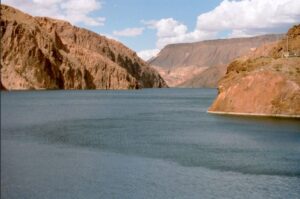
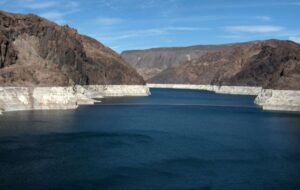 As a kid, I remember going to the Grand Canyon, Las Vegas, and Lake Mead. I particularly enjoyed Lake Mead, because the water was warm, unlike most lakes. At the time, and for many years afterward, I really didn’t know much about the lake, its origins, or its secrets. These days, I maybe know too much about its secrets. In fact, some of them are really creepy. Many lakes sport hidden ghost towns, underground ranches, and various sunken boats. There are probably more bodies in them that we know or want to think about too, but when a drought occurs and we find ourselves hearing about body after body being found in a lake that is close to one of the big mob-controlled areas of the nation, it makes you wonder exactly what happened here and just how many more bodies will surface. Well, in the case of Lake Mead, the answer is a total of five bodies…so far. Who knows how many more will surface.
As a kid, I remember going to the Grand Canyon, Las Vegas, and Lake Mead. I particularly enjoyed Lake Mead, because the water was warm, unlike most lakes. At the time, and for many years afterward, I really didn’t know much about the lake, its origins, or its secrets. These days, I maybe know too much about its secrets. In fact, some of them are really creepy. Many lakes sport hidden ghost towns, underground ranches, and various sunken boats. There are probably more bodies in them that we know or want to think about too, but when a drought occurs and we find ourselves hearing about body after body being found in a lake that is close to one of the big mob-controlled areas of the nation, it makes you wonder exactly what happened here and just how many more bodies will surface. Well, in the case of Lake Mead, the answer is a total of five bodies…so far. Who knows how many more will surface.
One body was found in a barrel, with a gun nearby, causing speculation of a mob killing, and possibly making people who might have been the perpetrators of mob murders…if they are still alive, to become a little nervous about their crimes being found out. Of course, the police aren’t telling us much, but it is said that the body in the barrel, discovered in May, had been shot in the head and after being stuffed in the barrel it was thrown overboard, in the hope that it would never be seen again. It was the type of killing that was classic mob style, or so we’ve been told in the movies. Las Vegas was, and maybe still is, a big mob crime city, and this type of killing was a trademark in the 1970s and 19802. So, it is entirely possible that the killer is still alive and could be brought to justice.
Shortly after the body in the barrel was found, another body surfaced, and then in July a third body was found. Days after the body in the barrel surfaced, another corpse was reported. A third was discovered in July. Now, the skeletal remains of two more people were found just this month in the Swim Beach area. It makes me 
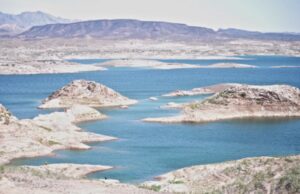 wonder how many more bodies will surface, if the drought continues and the lake level continues to drop. The lake level has dropped nearly 200 feet due to two decades of drought. Right now, the lake is very close to the level it was when it was originally filled after the building of Hoover Dam. I guess the old saying about the truth finding you out is true. the bodies, some long hidden, are coming out to tell of their demise.
wonder how many more bodies will surface, if the drought continues and the lake level continues to drop. The lake level has dropped nearly 200 feet due to two decades of drought. Right now, the lake is very close to the level it was when it was originally filled after the building of Hoover Dam. I guess the old saying about the truth finding you out is true. the bodies, some long hidden, are coming out to tell of their demise.
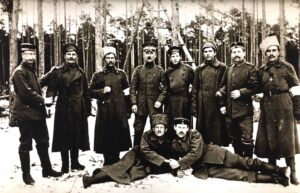 A truce in the context of war, doesn’t always mean a permanent end to the fighting. That is a fact that has often amazed me. If a war can be put “on hold” for a specific reason and a specified timeframe, why must the fighting then resume like the truce never happened? Nevertheless, resume it usually did. Such a truce happened between the German forces fighting the Russians forces in satellite regions like Lithuania and Belarus during World War I. The fighting raged in many different places at that time and continued through the winter of 1917.
A truce in the context of war, doesn’t always mean a permanent end to the fighting. That is a fact that has often amazed me. If a war can be put “on hold” for a specific reason and a specified timeframe, why must the fighting then resume like the truce never happened? Nevertheless, resume it usually did. Such a truce happened between the German forces fighting the Russians forces in satellite regions like Lithuania and Belarus during World War I. The fighting raged in many different places at that time and continued through the winter of 1917.
The intense fighting throughout the heavily forested region and had an unexpected side effect. Any time humans move into an area, the animal  population instinctively moves deeper into wilderness areas where there is less interaction with people, but when the winter is harsh and food becomes scarce, the animals can become as desperate as the humans. In that particular area at that particular time, the Russian wolves were starving. Any prey they might have been able to hunt had vacated because of the intense fighting, and so they had resorted to taking the bodies of the fallen soldiers for food. When there wasn’t enough of that, they began to actively hunt the soldiers, so now the soldiers of the Russian and the German armies had a whole new enemy, and this one could not be reasoned with.
population instinctively moves deeper into wilderness areas where there is less interaction with people, but when the winter is harsh and food becomes scarce, the animals can become as desperate as the humans. In that particular area at that particular time, the Russian wolves were starving. Any prey they might have been able to hunt had vacated because of the intense fighting, and so they had resorted to taking the bodies of the fallen soldiers for food. When there wasn’t enough of that, they began to actively hunt the soldiers, so now the soldiers of the Russian and the German armies had a whole new enemy, and this one could not be reasoned with.
The wolves had progressed from raiding villages to taking corpses to accosting groups of soldiers outright, so 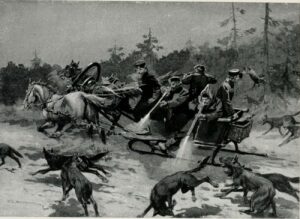 the two armies mutually decided that it was necessary to call a truce so they could rid the area of the unexpected mutual enemy…roving bands of gigantic Russian wolves. They were genuinely in fear for their lives. Wolves often attack in the dark and go for the weakest link or when people are sleeping. It became obvious that this would be a fight to the end…of one or the other…man or beast. So, both armies agreed to a temporary truce and went on a joint campaign of destruction. The wolves could not be allowed to stay, for the sake of anyone in the area. The two armies slew hundreds of wolves, and then simply resumed their fight. How very strange that seems to me, but I guess it probably wasn’t up to the soldiers to walk away from the war.
the two armies mutually decided that it was necessary to call a truce so they could rid the area of the unexpected mutual enemy…roving bands of gigantic Russian wolves. They were genuinely in fear for their lives. Wolves often attack in the dark and go for the weakest link or when people are sleeping. It became obvious that this would be a fight to the end…of one or the other…man or beast. So, both armies agreed to a temporary truce and went on a joint campaign of destruction. The wolves could not be allowed to stay, for the sake of anyone in the area. The two armies slew hundreds of wolves, and then simply resumed their fight. How very strange that seems to me, but I guess it probably wasn’t up to the soldiers to walk away from the war.
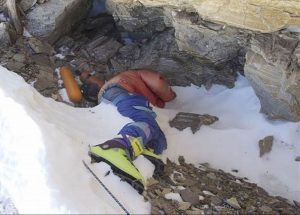 I love to hike, but that does not include going to the highest peak I can find. Don’t get me wrong, because I have hiked to the top of some mountains. They just weren’t on the level of Everest or K2. While I love to challenge myself by hiking up some pretty big mountains, I’m just not interested in taking on the ones where the air is so thin that you need oxygen, and the snow never melts. There are, nevertheless, people who feel the challenge to ascend to the highest peaks in the world. They throw caution to the wind, to go where few people have ever gone before. Believe me, I admire their tenacity, but that is simply not a goal I have, or ever will set, for myself.
I love to hike, but that does not include going to the highest peak I can find. Don’t get me wrong, because I have hiked to the top of some mountains. They just weren’t on the level of Everest or K2. While I love to challenge myself by hiking up some pretty big mountains, I’m just not interested in taking on the ones where the air is so thin that you need oxygen, and the snow never melts. There are, nevertheless, people who feel the challenge to ascend to the highest peaks in the world. They throw caution to the wind, to go where few people have ever gone before. Believe me, I admire their tenacity, but that is simply not a goal I have, or ever will set, for myself.
Mount Everest is a very unforgiving mountain. In the years that people have been climbing it, there have been over 200 deaths on it slopes. These were experienced climbers who knew what they were up against, and yet, the elements and the lack of breathable oxygen, beat them in the end. Of those 200+ people who lost their lives to Everest, many are still up on the slopes, right where they fell. They didn’t get off the beaten paths, they just didn’t get back down quickly enough, and now their bodies serve as a grim reminder of the harsh reality that is Everest. These people might have truly believed that they could make it, and many of them had no idea that they were dying. Severe cold and lack of oxygen will do that to a person.
In a gruesome ritual, each new climber who takes the challenge and starts up the mountain, must pass by the unfortunate ones who didn’t make it back down. To me, the bodies would serve as a warning to turn around and go back down, now…to use my head and stay alive, rather than my ambition to succeed at something that, to most of us, seems insane. I know that there are people who would disagree, believing that challenge is worth the risk, and it might be, right up to the point when you realize that you are about to become a statistic of Mount Everest. Of course, by the time you realize that, it is too late.
Mount Everest, located some 186 miles north-east of Kathmandu, holds the impressive title of tallest mountain in the world, but many people don’t know about its other, more gruesome title…the world’s largest open-air graveyard. Edmund Hillary and Tenzing Norgay first scaled the summit in 1953. Since then, over 4,000 people have followed in their footsteps, braving the harsh climate and dangerous terrain in the hope of a few moments of glory. Unfortunately, some of them never left the mountain. The top portion of the mountain, roughly everything above 26,000 feet, is known as the “death zone.” In the “death zone” the oxygen levels are only at a third of what they are at sea level, and the barometric pressure causes weight to feel ten times heavier. The combination of those two factors makes climbers feel sluggish, disoriented and fatigued…and can cause extreme stress on organs. For this reason, climbers don’t usually last more than 48 hours in this area.
The climbers that overstay their safety window are usually left with lasting effects. The ones that don’t make it out are left where they fall…it’s standard protocol, unfortunately, and so these corpses remain to spend eternity on the mountaintop, serving as a warning to climbers as well as gruesome mile markers. Each climber who attempts Mount Everest knows the possibilities. One of the most famous corpses, known as “Green Boots” was passed by almost every climber to reach the death zone. The identity of Green Boots while highly contested, is believed to be Tsewang Paljor, an Indian climber who died in 1996. Before the body’s recent removal, Green Boot’s body rested near a cave that all climbers must pass on their way to the peak. The body became a grim landmark used to gauge how close one is to the summit. He is famous for his green boots. According to one seasoned adventurer “about 80% of people also take a rest at the shelter where Green Boots is, and it’s hard  to miss the person lying there.” “Green Boots” is known as such because of the neon boots he was wearing when he died.
to miss the person lying there.” “Green Boots” is known as such because of the neon boots he was wearing when he died.
In 2006 another climber joined in Green Boots in his cave, sitting, arms around his knees in the corner, forever. David Sharp was attempting to summit Everest on his own, which is never advisable. Even the most advanced climbers would warn against it. He had stopped to rest in Green Boots’ cave, as so many had done before him. Over the course of several hours, he froze to death, his body stuck in a huddled position, just feet from one of the most famous Mount Everest bodies. Green Boots most likely died unnoticed, due to the small amount of people hiking at that time, but at least 40 people passed by Sharp that day. Incredibly, not one of them stopped. Sharpe’s death sparked a moral debate about the culture of Everest climbers. Though many had passed by Sharp as he lay dying, and their eyewitness accounts claim he was visibly alive and in distress, no one offered their help. How could they even live with themselves after that?
Sir Edmund Hillary, the first man to ever summit the mountain, criticized the climbers who had passed by Sharp and attributed it to the mind-numbing desire to reach the top. “If you have someone who is in great need and you are still strong and energetic, then you have a duty, really, to give all you can to get the man down and getting to the summit becomes very secondary,” he told the New Zealand Herald, after news of Sharp’s death broke. “I think the whole attitude towards climbing Mount Everest has become rather horrifying,” he added. “The people just want to get to the top. They don’t give a damn for anybody else who may be in distress and it doesn’t impress me at all that they leave someone lying under a rock to die.” The media termed this phenomenon “summit fever,” and it’s happened more times than most people realize.
In 1999, the oldest known body was found on Everest. George Mallory’s body was found 75 years after his 1924 death after an unusually warm spring. Mallory had attempted to be the first person to climb Everest, though he had disappeared before it could be found out if he had achieved his goal.
His body was found in 1999, his upper torso, half of his legs, and his left arm almost perfectly preserved. He was dressed in a tweed suit and surrounded by primitive climbing equipment and heavy oxygen bottles. He had a rope injury around his waist, which led those who found him to believe he had been roped to another climber when he fell from the side of a cliff. The fate of the other climber is unknown, and no one knows if Mallory made it to the top, so the title of “the first man to climb Everest” was given to someone else. Though he may not have made it, rumors of Mallory’s climb had swirled for years, leading many to wonder. He was a famous mountaineer at the time and when asked why he wanted to climb the then unconquered mountain, he famously replied, “Because it’s there.”
One of the most horrifying sights on Mount Everest is the body of Hannelore Schmatz. In 1979, Schmatz became not only the first German citizen to perish on the mountain but also the first woman. Schmatz had actually reached her goal of summiting the mountain, before ultimately succumbing to exhaustion on the way down. Her Sherpa’s warned her not to set up camp in the “death zone,” but she did anyway. She managed to survive a snowstorm hitting overnight, and made it almost the rest of the way down to camp before a lack of oxygen and frostbite resulted in her giving into exhaustion. This poor woman fell just 330 feet from base camp. That is a devastating loss…so close and yet too far. Her body remains on the mountain, extremely well preserved due to the consistently below zero temperatures. For a long time, her body remained in plain view of the mountain’s Southern Route, leaning against a long deteriorated backpack with her eyes open and her hair blowing in the wind. Then, 70-80 mph winds either blew a covering of snow over her or pushed her off the mountain. Her final resting place is currently unknown.
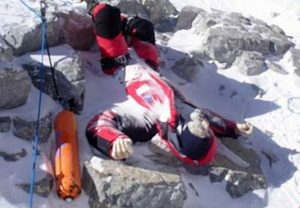 It’s due to the same things that kill these climbers that recovery of their bodies can’t take place. To us that seems insane, but when someone dies on Everest, especially in the death zone, it is almost impossible to retrieve the body. The weather conditions, the terrain, and the lack of oxygen makes it difficult to get to the bodies. Even if they can be found, they are usually stuck to the ground, frozen in place. In fact, two rescuers died while trying to recover Schmatz’s body and countless others have perished while trying to reach the rest. Despite those risks, and the bodies they know they will encounter, thousands of people still flock to Everest every year to attempt one of the most impressive, if not insane, feats known to man today.
It’s due to the same things that kill these climbers that recovery of their bodies can’t take place. To us that seems insane, but when someone dies on Everest, especially in the death zone, it is almost impossible to retrieve the body. The weather conditions, the terrain, and the lack of oxygen makes it difficult to get to the bodies. Even if they can be found, they are usually stuck to the ground, frozen in place. In fact, two rescuers died while trying to recover Schmatz’s body and countless others have perished while trying to reach the rest. Despite those risks, and the bodies they know they will encounter, thousands of people still flock to Everest every year to attempt one of the most impressive, if not insane, feats known to man today.

